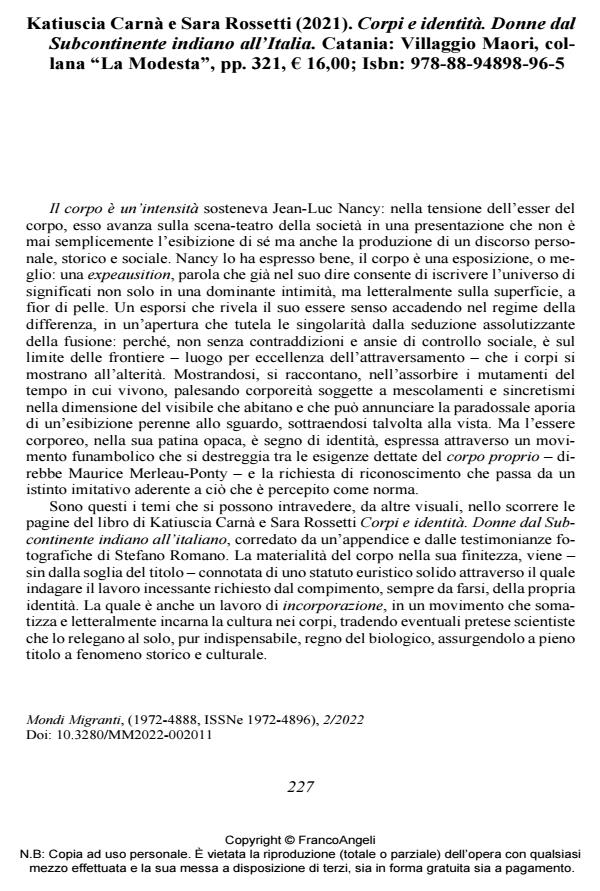Katiuscia Carnà e Sara Rossetti (2021). Corpi e identità. Donne dal Subcontinente indiano all’Italia. Catania: Villaggio Maori, collana "La Modesta", pp. 321, € 16,00; Isbn: 978-88-94898-96-5
Journal title MONDI MIGRANTI
Author/s Michela Donatelli
Publishing Year 2022 Issue 2022/2
Language Italian Pages 5 P. 227-231 File size 123 KB
DOI 10.3280/MM2022-002011
DOI is like a bar code for intellectual property: to have more infomation
click here
Below, you can see the article first page
If you want to buy this article in PDF format, you can do it, following the instructions to buy download credits

FrancoAngeli is member of Publishers International Linking Association, Inc (PILA), a not-for-profit association which run the CrossRef service enabling links to and from online scholarly content.
Michela Donatelli, Katiuscia Carnà e Sara Rossetti (2021). Corpi e identità. Donne dal Subcontinente indiano all’Italia. Catania: Villaggio Maori, collana "La Modesta", pp. 321, € 16,00; Isbn: 978-88-94898-96-5 in "MONDI MIGRANTI" 2/2022, pp 227-231, DOI: 10.3280/MM2022-002011